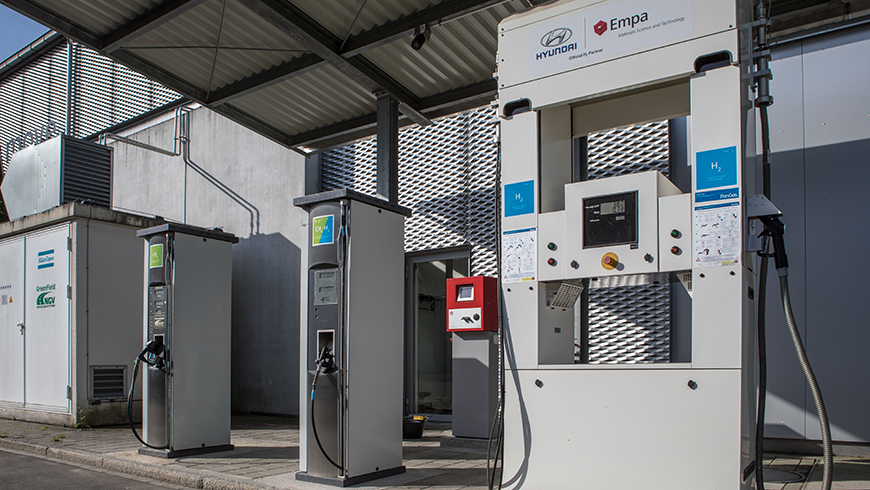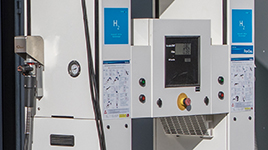How to make hydrogen filling stations safer
Paving the way for hydrogen mobility

What does mobility based entirely on renewable energy look like? With this question in mind, Empa researchers initiated the "move" research and demonstration platform in 2015 together with partners from the public sector and industry. Designed as the charging and filling station of the future, "move" can be used to refuel electric, hydrogen and gas vehicles. The basis for the production of the fuels is provided by temporary excess electricity, for example from photovoltaic systems, which otherwise cannot be used directly. For electric vehicles, the electricity is temporarily stored in a battery and is then also available at night at charging points. For hydrogen vehicles, an electrolysis plant converts the electricity into hydrogen, known as the "power-to-gas" concept (PtG; see box). In a further step, the hydrogen could then be converted with carbon dioxide (CO2) in a catalyst to methane (CH4), the main component of natural gas and biogas.
As part of "move" and with the support of the Swiss Federal Office of Energy (SFOE), H2 Energy and Hyundai, the first two 700bar hydrogen filling stations for refuelling passenger cars have been built throughout Switzerland in recent years; the first was put into operation in October 2016 in "move"; a month later the second filling station followed in Hunzenschwil, built by Coop and H2 Energy.
By setting up and operating the first hydrogen filling stations and with the accompanying research, Empa, together with all its "move" partners, has laid the foundations for various initiatives to promote hydrogen mobility in Switzerland. A few months ago Hyundai announced its intention to deliver a total of 1000 fuel cell trucks to Switzerland in the coming years. In addition, the "H2 Mobility Switzerland" association was founded last year and is supported by H2 Energy as a consultant. The goal is a nationwide hydrogen filling station network in Switzerland. The insights gained during the first years of operation of the two existing hydrogen filling stations are immensely valuable for the development of this network.
Equal measurements throughout Europe

Safety mechanism for hydrogen filling stations
In addition to the technical implementation and experience gained in operating hydrogen filling stations, Empa researchers are now also focusing on clarifying regulatory and safety-related issues. For example, the integration of a hydrogen filling station into existing filling stations has to meet a number of challenges. Since safety at a filling station has top priority, adequate safety zones around the individual pumps are necessary. Nevertheless, the filling stations should be as close together as possible to save space. The current regulations lead to costly adaptations of conventional filling station components if a hydrogen filling station is installed in close proximity. "In cooperation with Suva, we have therefore investigated technical possibilities in order to guarantee safety despite the space-saving design," says Urs Cabalzar, project manager of "move".
One of these possibilities is a standardized leak test before each hydrogen refuelling. "This can be used to determine whether there is a leak in the fuel system between the dispenser and the vehicle tanks. In such a case, refuelling would not be permitted," explains Cabalzar. Extensive tests and calculations on the existing systems have shown under which conditions a leak test functions reliably. "This makes it much easier to integrate hydrogen into conventional filling stations," says the Empa researcher.
Bringing clarity into the approval process
| Audio |

Radio programme on SRF1 of 28 June 2019 in German.
-
Share
